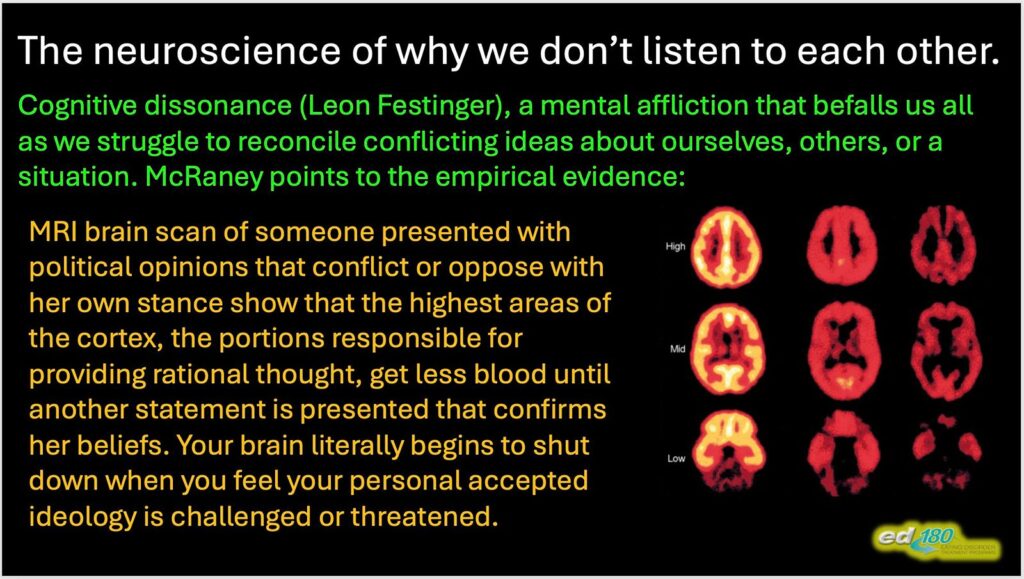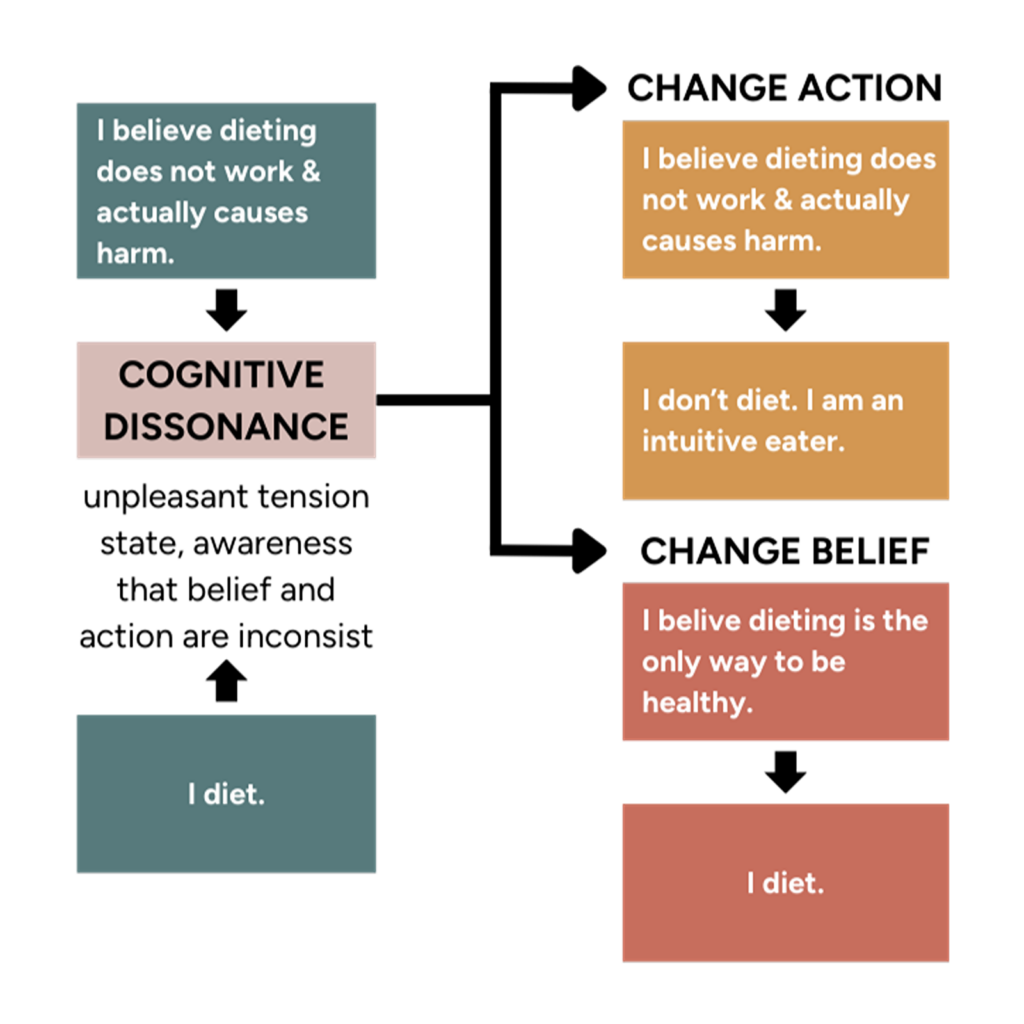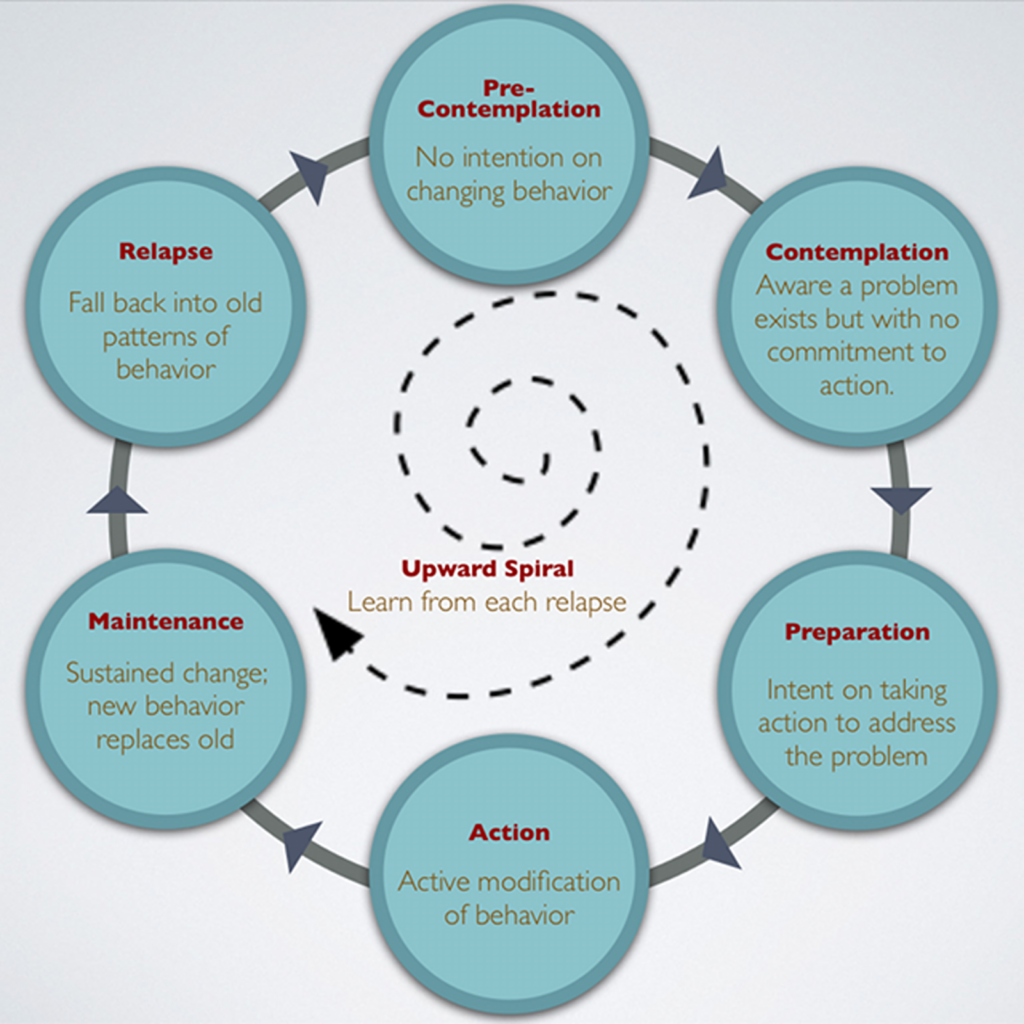Join Me on Instagram!
Let's Work Together
Counseling Services
Consultation for Clinicians
read more
About Kate
Also known as the founder of Among the Trees Counseling & Wellness, South Carolina native, Vermont transplant, and most likely to pick a green slope (or skip the skiing altogether in favor of a maple creemee).
Why Is It So Hard to Adopt Intuitive Eating? Understanding Your Brain’s Resistance to Change
February 3, 2025

When you first encounter intuitive eating and Health at Every Size (HAES) principles, you might find yourself feeling unusually skeptical, defensive, or even angry. If you’re experiencing these reactions, you’re not alone – and there’s actually a scientific explanation for what you’re feeling. Let’s explore why this happens and what you can do about it.
What Is Cognitive Dissonance and Why Does It Matter?
Cognitive dissonance is the mental discomfort we experience when holding two conflicting beliefs or values.
Examples of cognitive dissonance include situations in which you believe plastic is bad for the environment and that humans have a responsibility to protect the environment, but you still use plastic bags. Or that you are certain, cognitively, that smoking is bad for you, but you smoke. Or that you give excellent advice on self care practices to family and friends, but find it very difficult to implement those same self care practices in your own life. (You know, for example. 😉)
If you’re new to intuitive eating, you might be experiencing this discomfort as your long-held beliefs about food, health, and body size clash with new information. Some common signs that you’re experiencing cognitive dissonance include:
- Feeling unusually critical of new information
- Experiencing unexplained discomfort or anxiety
- Finding yourself more confused than usual
- Worrying about being perceived as hypocritical
- Noticing conflicting viewpoints but feeling stuck on how to proceed
The Science Behind Your Resistance
Fascinating research using MRI scans has shown that when we encounter information that conflicts with our existing beliefs, our brain actually reduces blood flow to the areas responsible for rational thought. This is why it can feel harder to think clearly when processing challenging new concepts about food, body image, and health.

How We Respond to Cognitive Dissonance in Intuitive Eating
When faced with the cognitive dissonance between older, restrictive beliefs about food and bodies and intuitive eating principles, we typically have two options:
- Change our beliefs: We might reject the new information about intuitive eating and hold onto our existing beliefs about dieting and weight control.
- Change our actions: We might accept the new information and begin to shift away from dieting behaviors toward intuitive eating practices.

The Stages of Change: A Framework for Understanding Your Journey
Another way of thinking about our response to new paradigms is through the Stages of Change model, which recognizes that any journey, including the journey to becoming an intuitive eater, isn’t linear. The Stages of Change model, developed in the late 1970s, identifies six stages:
- Precontemplation: No intention to change current dieting behaviors
- Contemplation: Beginning to consider the possibility of a non-diet approach
- Preparation: Taking initial steps to learn about intuitive eating
- Action: Actively implementing intuitive eating practices
- Maintenance: Sustaining intuitive eating behaviors
- Relapse: Temporary return to old patterns (a normal part of the process)

Moving Forward with Self-Compassion
Remember that this journey is not about reaching “maintenance” immediately or perfectly. Think of it as an upward spiral – even if you feel like you’re going in circles, you’re actually moving upward with each cycle. Every time you engage with these concepts, you’re making progress, even if it doesn’t feel that way.
Your Next Steps
- Notice where you are in the stages of change
- Acknowledge any cognitive dissonance you’re experiencing
- Practice self-compassion as you navigate this journey
- Keep showing up with an open mind
- Remember that resistance is a normal part of the process
Final Thoughts
If you’re finding it challenging to accept intuitive eating principles, know that your resistance is both normal and expected. Your brain is doing exactly what it’s designed to do – protecting your existing beliefs. By understanding this process and approaching it with curiosity and compassion, you can better navigate your journey toward a healthier relationship with food and your body.
Be the first to comment